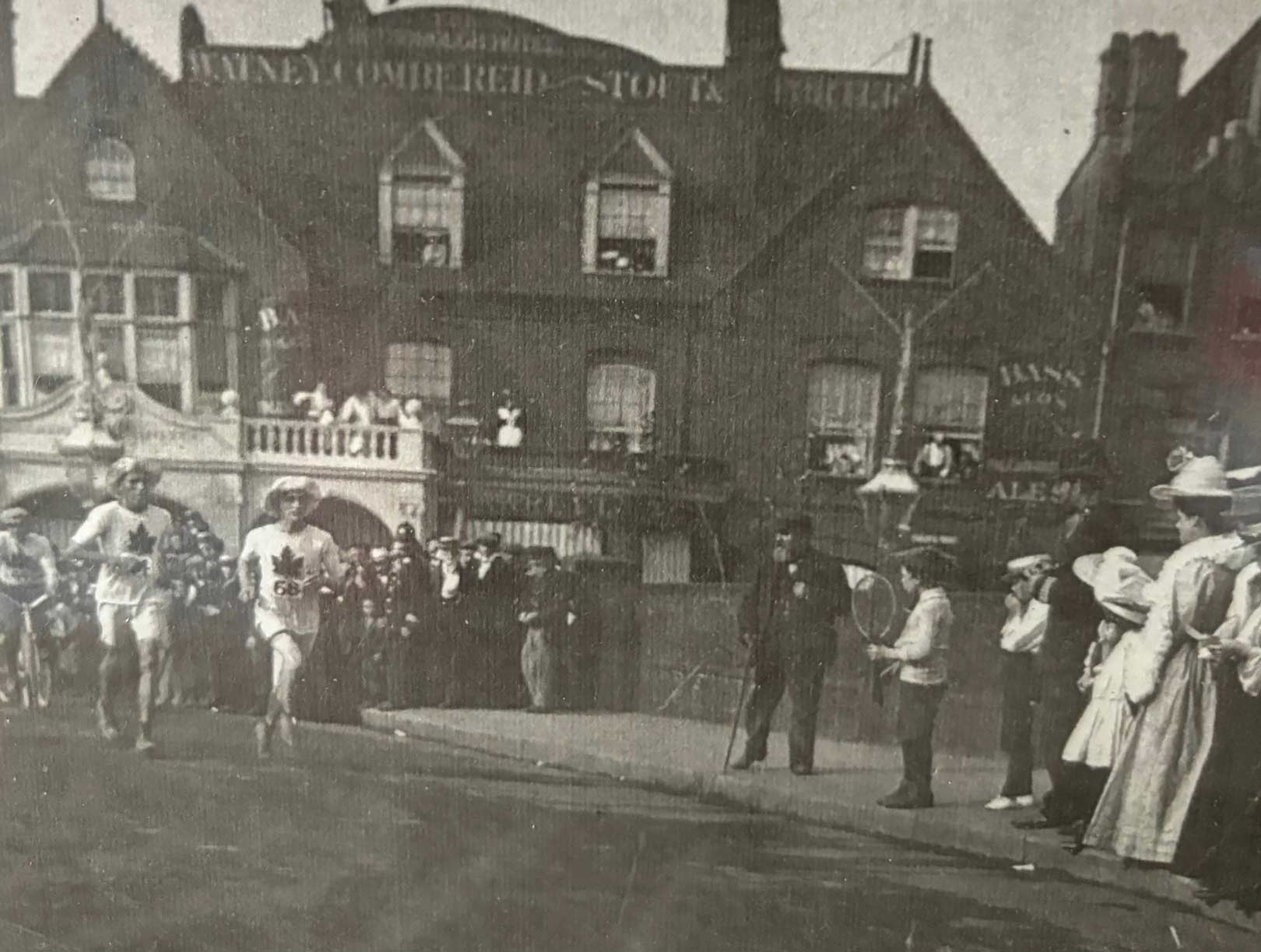
Photograph of Fred Simpson (left) courtesy Dave Mowat©
July 24, 1908
It was a hot afternoon on July 24, 1908, and the crowd at London’s White City Stadium was anxiously awaiting to see which runner would enter the track first and win the fourth Olympic marathon – the first one at the now-standard distance of 26 miles, 385 yards. (The race was extended to that exact distance to accommodate Queen Alexandra’s request that the runners start on the lawn of Windsor Castle so that her children could watch from the nursery windows.)
For Canadians it was a tense and exciting moment, as two Indigenous athletes from Ontario were currently running in the top ten. Then news came that the favourite, Onondaga runner Tom Longboat, had dropped out; it was all up to a quiet, lanky young man from Alderville named Fred Simpson, who ended up finishing a respectable sixth. The Mississauga Ojibwe was a fast runner and fierce competitor who had made his name winning races across Ontario, earning the nickname “The Ojibway Thunderbolt.” And his path was a swift one.
Only two years after entering a ten-mile race from Lakefield to Peterborough in 1906, he found himself toeing the start line at Windsor Castle as an Olympian.
After the Olympics, Simpson turned pro and retired in 1912, living first in Hiawatha and then in Alderville, where he died in 1945. Although Simpson didn’t win in London that summer day, he won a more important race: he established the best finish ever for an Indigenous Olympic marathon runner. The record for a Canadian male stood for another 68 years.




